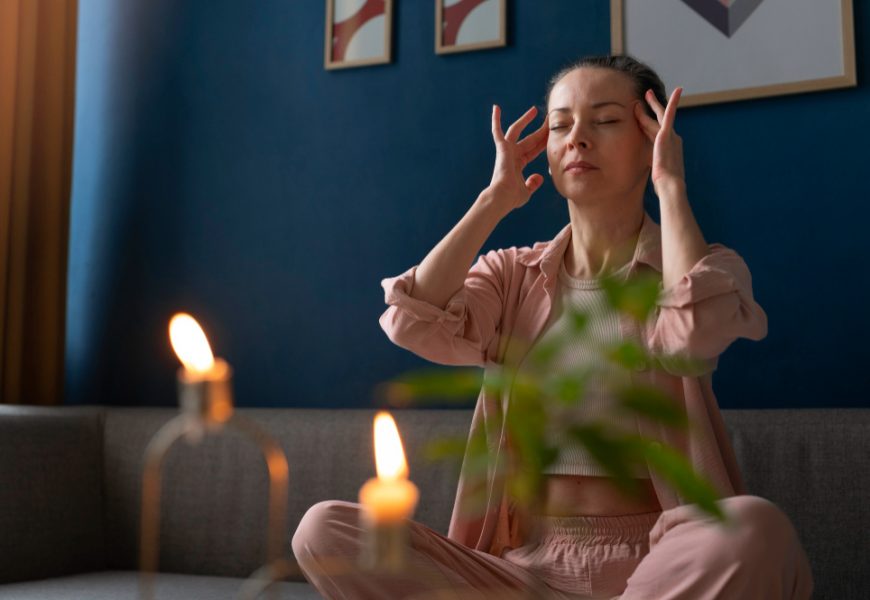In the fast-paced tempo of modern life, it is easy to underestimate the extraordinary power of simple daily rituals. Whether it is the gentle discipline of stretching in the morning, the intentionality behind savoring a balanced breakfast, or the quiet grounding of a few mindful breaths before the workday begins, these repetitive acts provide a profound sense of stability and nourishment. Likewise, in the evening, rituals such as journaling one’s reflections, writing a brief note of gratitude, or engaging in light physical activity help signal the body and mind that the day’s activity is coming to a close, setting the stage for restorative sleep and emotional reset.
Far from being trivial routines, these daily practices serve as guiding anchors, offering continuity in a world otherwise marked by unpredictability. Psychologists often note that rituals—whether elaborate cultural ceremonies or modest daily habits—bring structure and predictability, which ease mental strain. Much like a metronome that steadies the tempo of a song, rituals provide rhythm to life. This predictable rhythm fosters a sense of safety, reducing the mental energy spent on reacting to uncertainty. Over time, this cultivated sense of order strengthens emotional resilience.
The effects extend deeply into the body’s biological systems. Regular routines promote regulated sleep cycles, which in turn enhance both cognitive function and overall physical repair. Consistent deep rest strengthens immunity, allowing the body to more effectively combat illness. Stress-management rituals such as meditation, gentle exercise, or breath-focused practices directly influence cortisol (the stress hormone), keeping it within healthier ranges and reducing the long-term risks associated with chronic stress, such as cardiovascular strain and weakened immune defense. Moreover, structured daily rituals establish a balanced cycle of exertion and recovery. This means that energy is spent wisely during periods of activity, and replenishment is allowed to take root during times of intentional rest—both crucial for sustainable well-being.
It is not the grandeur of the rituals that matters most, but their constancy. A short walk taken every day has greater impact than an intense but sporadic workout. Five minutes of reflection or gratitude journaling done nightly conditions the mind to locate small joys more readily than long, inconsistent bursts of positivity-seeking. These small, steady acts create compounding effects: with consistency, their benefits grow, and over time they contribute to noticeable shifts in mood stability, stress tolerance, and overall health. In essence, rituals are proof that sustainability, not intensity, lays the foundation for lasting transformation.
Examining daily rituals through both scientific evidence and lived human experience reveals a deeply interconnected cycle of reinforcement between mind and body. For example, consider the practice of meditation. While it provides an immediate sense of calm, its consistent practice boosts concentration, regulates emotional swings, and even enhances physiological markers like heart rate variability and blood pressure. Such mental clarity fosters better choices throughout the day—from decision-making at work to choosing more wholesome meals—thus influencing physical health. Similarly, the regularity of exercise brings obvious bodily benefits such as increased strength and endurance, but it also elevates mood through the release of endorphins, sharpens cognitive processing, and enhances resilience against stress.
This interdependence creates a feedback loop: when one invests in rituals that uplift the mind, the body responds with heightened vitality; when one fortifies the body through steady care, the mind reaps benefits of clarity and balance. It is a synergy in which neither dimension stands alone—cognitive well-being supports physical flourishing, and physical stability underpins mental health.
Beyond science, cross-cultural traditions highlight the timeless recognition of ritual’s value. In Japan, practices such as shinrin-yoku (forest bathing) show how intentional immersion in daily acts of nature connection restores both psychological and physiological balance. Scandinavian traditions of integrating sauna use and cold immersion demonstrate how ritualized physical stress recovery routines promote not only resilience but also community bonding. Across many religious or spiritual practices, the act of structured prayer or reflection underscores ritual’s role in providing psychological grounding and communal strengthening. Though the settings and symbols differ, the principle is the same: rituals give life coherence, rhythm, and meaning.
A crucial distinction, however, is that rituals are not about rigid discipline or chasing some unattainable vision of perfection. Instead, they are about anchoring oneself in simple actions that carry intention and purpose. The pressure of modern lifestyles often teaches us to seek productivity at all costs. Rituals counter this by reminding us to pause, to act with intention, and to align behaviors with deeper values rather than fleeting external demands. They can be as gentle as preparing a calming herbal tea in the evening or taking two mindful breaths before sending an important email. Small gestures, repeated daily, become seeds that grow into expansive changes.
Research confirms what traditions have long suggested: individuals who consistently engage in restorative rituals not only report improved physical health markers—lower blood pressure, reduced stress, stronger sleep—but also a more balanced psychological outlook. They experience enhanced focus, greater patience, and deeper resilience when encountering adversity. By serving as daily anchors, rituals keep us from drifting into aimless living. They infuse life with a steady rhythm that is both nourishing and sustainable.
Ultimately, the cultivation of rituals is about living with intention. It is about creating a stabilizing framework in which mind and body can work together, not in conflict. By grounding daily life in practices such as mindful nutrition, movement, reflection, or creative engagement, individuals can thrive not through intensity or perfectionism but through steadiness. The rewards are both measurable—better sleep, improved health outcomes—and immeasurable—increased contentment, presence, and alignment with one’s values.
In a world where uncertainty and distraction often dominate, daily rituals hold extraordinary power. They do not just shape habits but form the invisible scaffolding upon which holistic well-being rests. When nurtured gently and consistently, they allow us not just to survive the demands of modern life, but to thrive within it.


